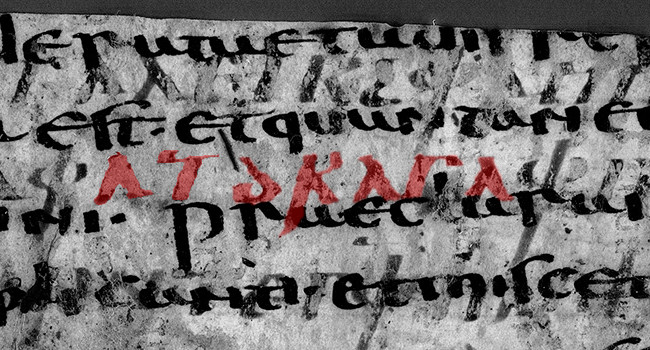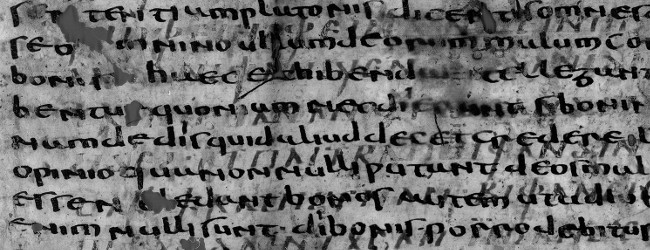Gothica Bononiensia
Professors Rosa Bianca Finazzi and Paola Tornaghi of The Università Cattolica del Sacro Cuore in Milan have published1 a magnificent analysis of a recently discovered 6th-century palimpsest of two folio pages containing previously unseen passages from the Gothic Bible.

The newly attested Gothic word “atdragan” from Isiah 14:14-15
In the previous image I have highlighted the newly found word “atdragan” from Isaiah 14:14-15.
The fragment was originally of interest due to it being a very early witness to St. Augustine’s “City of God”, an initial analysis and interpretation of which was published by Armando Antoelli, who provided the original dating. During a subsequent paleographic analysis by the scholars Maddalena Modesti and Annafelicia Zuffrano, it was discovered that the Latin fragment was actually a palimpsest with a scriptio inferior in the Gothic language.
Finazzi and Tornaghi have given the Gothic text the name, Gothica Bononiensia, from where the fragment was found: the Basilica of San Petronio in Bologna. A complete transcription of the Gothic text and images from the article can be found here.
From a linguistic perspective, one of the more exciting aspects of the find is the discovery of previously unattested words. Forms of words that had only been reconstructed by linguists were found:
- farao (pharaoh) f. 2v, 20
- magaþs (maiden) f. 2v, 7
- þiuþeins (blessing) f. 1v, 20
- unfroþs (foolish) f. 2r, 18
- unsibjis (wicked) f. 2r, 20
(Finazzi and Tornaghi state that these forms will no longer need to carry asterisks in the Gothic dictionaries.)
… as well as words that have never been attested before:
- Nabukaudaunausaur (Nebuchadnezzar, proper name) f. 2v, 22
- fairjan (to depart, distance, move away) f. 2v. 10-11
- ananamnjan (to label, nickname, call) f. 1v, 26
- atdragan (to pull down) f. 2r, 7
- fra[t]rudan (to trample) f. 1r, 18
- gawitan (to defend) f. 1r, 6
- usþinsan (to tear, pull) f. 2v, 24
The fragment contains a series of biblical passages that jump between the Old and New Testaments. The authors speculate that the different passage perhaps form the framework for a homily that could be referenced by a priest. Since some of passages are also found in the Wulfia bible, further study is needed to understand if the Gothic passages could have been translations based on different Greek or Latin sources than Wulfia’s.
1 Gothica Bononiensia: Analisi linguistica e filologica di un nuovo documento, Aevum, 87 (2013), fasc. 1, pp. 113-155), ISSN 0001-9593


